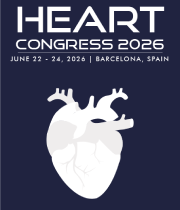Title : Effects of impaired microcirculation in the musculoskeletal system
Abstract:
Throughout the body blood flow is regulated by vascular tone secondary to local or neurologic control. However, in the musculoskeletal system, the effects of muscular contraction can lead to augmentation of restriction of local blood flow. While repetitive muscle contraction increases local blood flow, sustained muscular contraction limits blood flow. It is known from cardiac physiology that coronary blood flow is predominant in diastole as systolic cardiac contraction compresses capillaries to limit blood flow. Research I performed during my cardiology fellowship demonstrated that progressive suppression of contractility with increasing doses of beta blockers will ultimately lead to a reversal of the systolic to diastolic blood flow such that the predominant flow is in systole. Unfortunately, I neglected to publish that finding at that time for unknown reasons. It can be readily understood from that and other work that the degree of muscle contraction determines the degree of blood flow suppression. I have previously presented arguments supporting the ischemic model of chronic muscle spasm. Ischemia is seen as the causative agent keeping the muscle in chronic spasm. The other side of that argument is that prolonged spasm leads to the ischemia completing the vicious cycle of ischemia maintaining chronic spasm. The prolonged ischemia leads to the development of marked spontaneous electrical activity or SEA seen on EMG evaluation that both identifies the muscle in chronic spam and is the causative agent to maintain the muscle in spasm.
Chronic muscle spasm is not the only site in the musculoskeletal system where impairment of microcirculation has untoward effect. Tendinopathy, formerly always identified as tendinitis, varies in its pathologic findings depending which part of the tendon is biopsied. As it turns out, inflammation is seen at some sites but more consistently is loss of fibers noted in some cases stated to represent hypoxic damage. I had postulated that tendonitis was the result of impairment of the microcirculation of the central aspects of the tendon secondary to the pull of an attached muscle in chronic spasm. Biopsy studies of the mid portion of the Achilles tendon in cases of tendinopathy do not show inflammation but findings that would be consistent with ischemic damage. Clinically, treatment of chronic muscle spasm that had resulted in tendinopathy, has a distinct clinical course. Typically, it takes about three days after successful treatment of the chronic muscle spasm for relief of the tendinopathy. This would not be inconsistent with partial tendon recovery with the restitution of central tendon blood flow. Based upon this premise, the protocol for treatment of tendinopathy should initially be a search for an attached muscle in chronic spasm and treatment should begin with attempted resolution of that muscle spasm.
As described above, the common thread of impaired microcirculation in the musculoskeletal system has broad implications for therapeutic intervention.
The audience will learn how to identify by EMG evaluation the presence of chronic muscle spasm.
The audience will learn the pathophysiology of both chronic muscle spasm and tendinopathy.
Understanding the effects of impaired microcirculation in the musculoskeletal system should allow for the development of additional treatment protocols that can lead to more rapid and resilient outcomes.
Understanding the pathophysiology of chronic muscle spasm will allow the audience to use EMG guidance in identifying skeletal muscle in true chronic spasm.
Understanding the pathophysiology of tendinopathy will allow the audience to seek out attached muscles in chronic spasm to be treated and relieve the tendinopathy.
Presentation will also include a video presentation of a treatment protocol, CMECD, that the audience will be able to undertake and successfully treat chronic muscle spasm with resultant chronic pain with a single EMG guided injection.
The belated understanding of the etiology and identification of chronic muscle spasm and resultant pain should be a new starting point in the field of myology and pain management for future research and treatment options.
The treatment protocol, CMECD, is an entirely practical treatment option and can be undertaken by any medical practitioner that is authorized to give injections.



